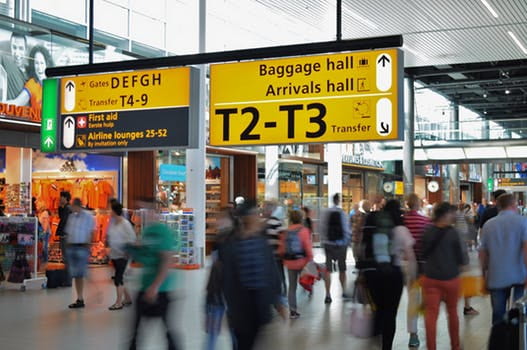Stricter FAA regulations on pilots linked to higher fares, fewer flights
UCI study also finds low-cost, regional air carriers disproportionately affected

Irvine, Calif., May 1, 2018 — When federal legislators passed a bill in 2010 requiring longer rest periods and more flight training for commercial airline pilots, the goal was to improve passenger safety. But a University of California, Irvine study has found that the regulations had unintended consequences: higher fares and fewer choices for air travelers.
The Airline Safety & Federal Aviation Administration Extension Act, or HR 5900, was in response to the 2009 crash of a regional airliner in which 50 people died due to pilot error. The victims’ families lobbied for the bill, which mandated more off-duty hours for pilots to rest and 1,500 hours of flight time to earn commercial pilot certification – a sixfold increase.
When the regulations went into effect in 2013, the pool of qualified, available commercial pilots shrank, according to economics graduate students Alexander Luttmann and Cody Nehiba in UCI’s Program in Corporate Welfare. Regional and low-cost carriers bore the brunt of the impact compared to legacy carriers, yet roundtrip prices rose at all airlines.
“Safety is paramount, but accurately measuring if safety has improved in commercial aviation – an industry where accidents are very rare in the U.S. – is challenging,” Nehiba said. “There is, however, clear evidence that the regulations decreased consumer choice and competition on certain routes and caused fares to increase.”
Nonstop roundtrip prices jumped 6 percent to 8 percent, or roughly $27 to $37, at both legacy and regional carriers, the researchers noted.
It comes as no surprise that stricter regulations on workers’ hours push up costs, which are likely to be passed on to consumers. Previous research confirms this. But for the most part, pilots for major airlines – such as Delta, United and American – already adhered to the rules codified by HR 5900. So why did those carriers’ airfares increase?
According to Luttman and Nehiba, the answer lies in the specific market structure of the airline industry, in which there are relatively few providers. Because regional and low-cost carriers worked pilots closer to the limits of the old regulations, they were more affected by the new regulations and dropped some flights. On each route, they scheduled 3 percent to 6 percent fewer departures. This decrease in competition, the UCI researchers surmised, is partially responsible for the boost in fares at big-name airlines.
“We would urge policymakers to carefully consider market structure when developing regulations,” Luttmann said, “so as to avoid inadvertently favoring firms that already dominate the market and adversely affecting consumers.”
The study was conducted through UCI’s Program in Corporate Welfare, which focuses on research into the causes and consequences of policies that give certain companies advantages or privileges over competitors.
About the University of California, Irvine: Founded in 1965, UCI is the youngest member of the prestigious Association of American Universities. The campus has produced three Nobel laureates and is known for its academic achievement, premier research, innovation and anteater mascot. Led by Chancellor Howard Gillman, UCI has more than 30,000 students and offers 192 degree programs. It’s located in one of the world’s safest and most economically vibrant communities and is Orange County’s second-largest employer, contributing $5 billion annually to the local economy. For more on UCI, visit www.uci.edu.
Media access: Radio programs/stations may, for a fee, use an on-campus ISDN line to interview UCI faculty and experts, subject to availability and university approval. For more UCI news, visit wp.communications.uci.edu. Additional resources for journalists may be found at communications.uci.edu/for-journalists.